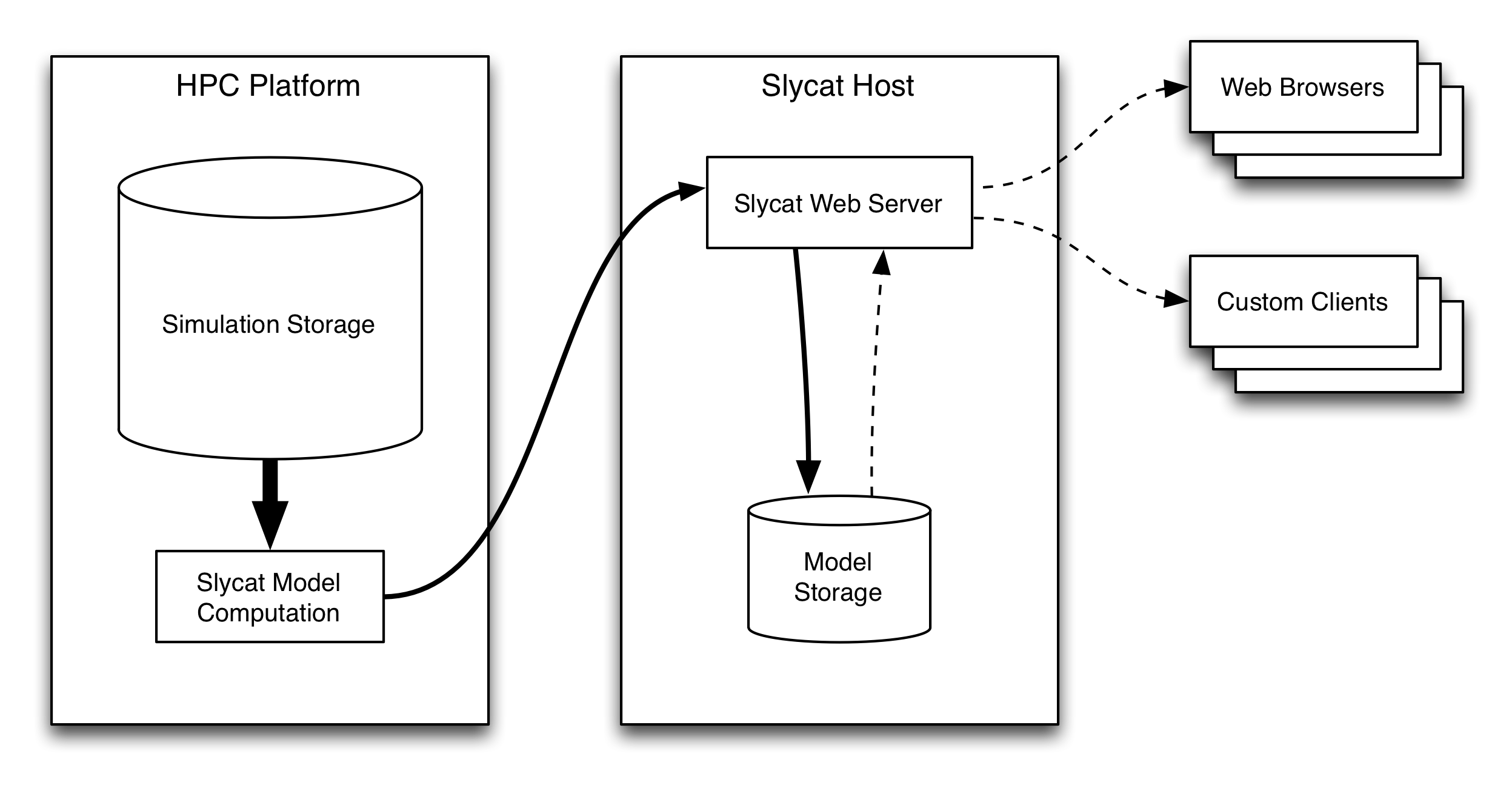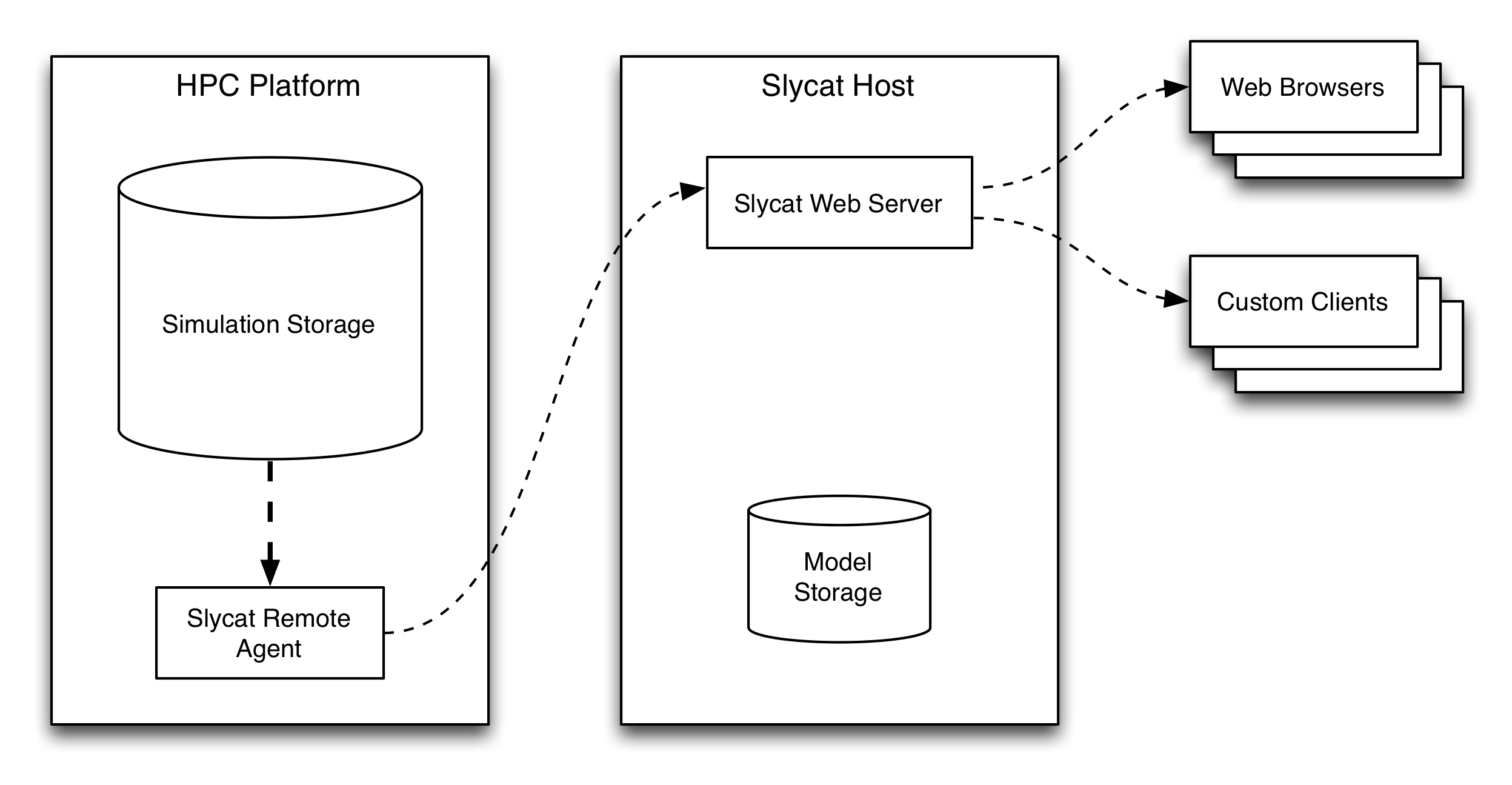Design
Because Slycat™ is a system for analysis of data ensembles, and ensembles typically include orders of magnitude more data than individual simulation runs, managing data movement is an integral part of the Slycat™ design. Ideally, we want to perform one-time computation on the host where data lives so that only an analytical model – typically orders of magnitude smaller than the original data – is moved across the network to the Slycat™ host. This leads to the following Slycat™ architectural design:

In the above case, large data on an HPC platform is analyzed in-place to produce greatly reduced model artifacts that are stored by the Slycat™ web server. Later, these artifacts are delivered – incrementally and on-demand – to interactive clients.
However, it isn’t always possible to reduce the analytical workflow to an ideal, reduced-size model. For example, users may wish to interactively browse through the raw outputs of an ensemble of simulations. For this case, Slycat™ provides a remote “agent” process that can access data on an HPC platform, packaging and compressing it on-demand for live delivery to interactive clients:

As an example, this mode of interaction is ideal for browsing through output image series on a remote server - in addition to delivering individual images, the agent can compress images on-the-fly into video streams for live playback.